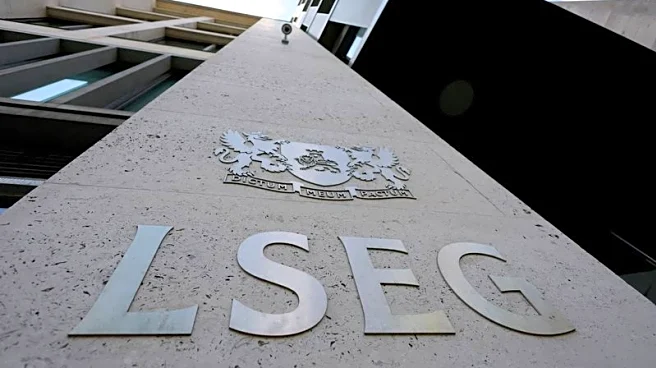What's Happening?
The Bank of England is poised to make its final interest rate decision before the upcoming Autumn Budget. Economists largely anticipate that the central bank will maintain its key interest rate at 4% during
its November meeting. However, there is speculation about a potential rate cut, with some financial institutions like Barclays and Nomura suggesting a possible reduction to 3.75%. The decision is complicated by mixed economic signals, including stagnant inflation rates and a softening labor market. Dean Turner, an economist at UBS Global Wealth Management, noted the difficulty in predicting the outcome, emphasizing that while a rate cut is expected eventually, the timing remains uncertain.
Why It's Important?
The Bank of England's decision on interest rates is crucial for the U.K.'s economic landscape, impacting borrowing costs, consumer spending, and business investment. A rate cut could stimulate economic activity by making loans cheaper, potentially boosting growth in a period of lackluster economic performance. Conversely, maintaining the current rate might signal confidence in the economy's ability to stabilize without additional monetary intervention. The decision will also influence global markets, as investors react to changes in U.K. monetary policy, affecting currency values and international trade dynamics.
What's Next?
If the Bank of England decides to hold rates steady, economists predict that a rate cut could occur as early as December. This anticipated move would be in response to cooling inflation and continued labor market challenges. Stakeholders, including businesses and consumers, will closely monitor the central bank's signals for future policy adjustments. The Autumn Budget will further shape economic expectations, potentially influencing the Bank's decisions in the coming months.
Beyond the Headlines
The potential rate cut reflects broader economic challenges, including the struggle to balance inflation control with growth stimulation. The decision underscores the delicate nature of monetary policy in addressing economic uncertainties. Long-term implications may include shifts in investment strategies and consumer behavior, as stakeholders adapt to changing financial conditions.












